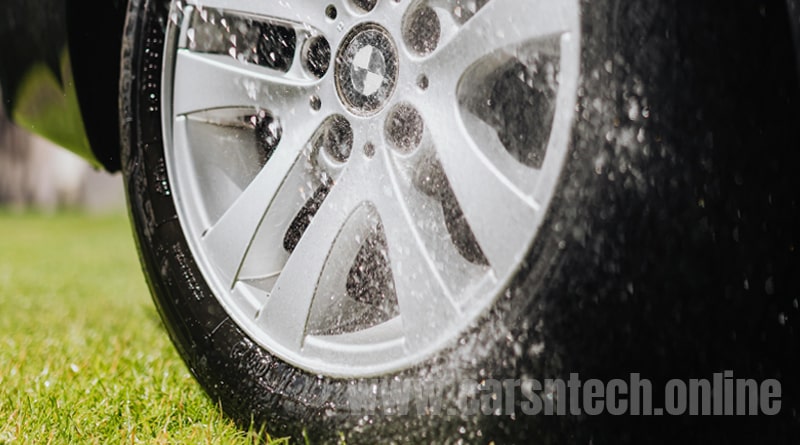Unraveling the Marvel: The Intriguing World of Traction Control Systems (TCS)
Table of Contents
- Introduction: Traction Control Systems in the Spotlight
- The Mechanism Behind Traction Control: Enhancing Grip on the Road
- How Traction Control Works: The Intervention Explained
- 3.1 Brake Force Application
- 3.2 Spark Sequence Reduction
- 3.3 Fuel Supply Reduction
- 3.4 Throttle Closure
- 3.5 Boost Control Solenoid Activation
- Collaborating with ABS: Sharing the Essentials
- The Need for Traction Control: Safeguarding Steering Control and Stability
- Active Differential: Enhancing Traction through Smart Power Distribution
- The Traction Control Unit: A Symphony of Electromechanical Sensors
- Enabling Traction Control: Detecting and Addressing Wheelspin
- The Versatility of Traction Control
- 9.1 In Road Cars: From High-Performance to Everyday Safety
- 9.2 In Race Cars: Unleashing Performance Potential
- 9.3 In Heavy Trucks: Navigating with Precision
- 9.4 In Motorcycles: Empowering Riding Confidence
- 9.5 In Off-Road Vehicles: Defying Challenging Terrain
- The Controversy in Motorsports: Ban and Battle of Traction Control
- Traction Control in Cornering: Taming Understeer and Oversteer
- Traction Control and Responsible Driving: A Balancing Act
Introduction: Traction Control Systems in the Spotlight
The quest for safer and more efficient driving has given rise to a wide array of advanced automotive technologies. Among these innovations is the Traction Control System (TCS), a remarkable feature designed to prevent loss of traction, or wheelspin, in motor vehicles. In this article, we delve into the intriguing world of Traction Control Systems, exploring their mechanisms, functionalities, and versatile applications across different vehicle types.
The Mechanism Behind Traction Control: Enhancing Grip on the Road
Traction Control Systems are born from the understanding that compromised road grip can jeopardize a vehicle’s steering control and overall stability. The key to combating this challenge lies in effectively regulating the slip between the drive wheels and the road surface, achieved through an array of interventions.
How Traction Control Works: The Intervention Explained
3.1 Brake Force Application
One of the primary interventions employed by Traction Control Systems is the application of brake force to one or more wheels experiencing excessive wheelspin. By strategically slowing down the spinning wheel, the system enables power transfer to the wheels with better traction, ensuring smoother acceleration.
3.2 Spark Sequence Reduction
To further counter wheelspin, TCS may reduce or suppress the spark sequence to one or more cylinders. This controlled reduction in engine power curtails wheelspin, optimizing grip and stability.
3.3 Fuel Supply Reduction
In certain instances, TCS can limit fuel supply to specific cylinders, effectively controlling power delivery and preventing excessive wheelspin.
3.4 Throttle Closure
Vehicles equipped with drive-by-wire throttle systems can benefit from Traction Control’s ability to close the throttle in response to wheelspin. This intervention restricts engine power, restoring balance and grip to the road surface.
3.5 Boost Control Solenoid Activation
In turbocharged vehicles, TCS may activate the boost control solenoid to reduce boost pressure, leading to a decrease in engine power and mitigating wheelspin.
Collaborating with ABS: Sharing the Essentials
Traction Control Systems often share essential components with Anti-lock Braking Systems (ABS), including the electrohydraulic brake actuator and wheel-speed sensors. This synergy ensures optimal performance and coordination between the two safety features.
The Need for Traction Control: Safeguarding Steering Control and Stability
The fundamental purpose of Traction Control is to maintain optimal grip and stability during acceleration, particularly in adverse road conditions. By preventing wheelspin, TCS empowers drivers with improved steering control, enhancing overall safety.
Active Differential: Enhancing Traction through Smart Power Distribution
To further optimize traction, advanced vehicles employ an active differential that intelligently distributes power between the outer and inner wheels during turns. This sophisticated technology enables precise power transfer, minimizing yaw and enhancing stability.
The Traction Control Unit: A Symphony of Electromechanical Sensors
The core of TCS lies in its traction control unit, comprising a network of electromechanical sensors. These sensors collaborate to detect wheelspin and trigger the necessary interventions for maintaining grip on the road.
Enabling Traction Control: Detecting and Addressing Wheelspin
When the traction control computer senses significant wheelspin on one or more driven wheels, it promptly activates the ABS electronic control unit. This collaboration allows for the application of brake friction to wheels experiencing reduced traction, facilitating power transfer to wheels with better grip.
The Versatility of Traction Control
Traction Control Systems find application in various vehicle types, enhancing safety, performance, and maneuverability across the automotive spectrum.
9.1 In Road Cars: From High-Performance to Everyday Safety
Traditionally a feature of premium high-performance cars, Traction Control has now become available in non-performance vehicles, minivans, and light trucks, ensuring safer travels on a daily basis.
9.2 In Race Cars: Unleashing Performance Potential
In the realm of motorsports, Traction Control serves as a performance enhancement, maximizing traction during acceleration and maintaining optimal slip ratio during cornering.
9.3 In Heavy Trucks: Navigating with Precision
Traction Control also caters to heavy trucks, providing precise control in challenging driving conditions. Specialized systems, like the ASR (Automatic Slip Regulation) system, ensure stability and safety.
9.4 In Motorcycles: Empowering Riding Confidence
Traction Control made its way into motorcycles, empowering riders with increased confidence and control, especially in slippery road conditions.
9.5 In Off-Road Vehicles: Defying Challenging Terrain
In off-road vehicles, Traction Control takes the reins from mechanical limited-slip or locking differentials, ensuring optimal power distribution and steering control on challenging terrains.
The Controversy in Motorsports: Ban and Battle of Traction Control
In motorsports, the effectiveness of Traction Control has sparked debates and regulatory changes. Efforts to ban Traction Control systems led to rule changes in various racing categories, reflecting the ongoing battle between technology and fair competition.
Traction Control in Cornering: Taming Understeer and Oversteer
Beyond enhancing acceleration, Traction Control plays a critical role in cornering safety. By mitigating understeer and oversteer, TCS ensures stable and balanced driving, preserving the driver’s control and steering precision.
Traction Control and Responsible Driving: A Balancing Act
While Traction Control is a valuable safety feature, drivers must remember that responsible driving practices remain paramount. TCS should not encourage reckless driving or encourage driving in conditions beyond the driver’s control.
Conclusion: Embracing the Road Ahead with Traction Control
Traction Control Systems have revolutionized the way we drive, providing a safety net against wheelspin and enhancing stability and control. As technology advances, TCS will continue to evolve, ensuring safer and more enjoyable journeys for drivers worldwide.
FAQs
1. Can Traction Control be turned off if needed?
Yes, many vehicles come equipped with a traction control shut-off switch, allowing drivers to disable the system in certain situations, such as when trying to get a vehicle unstuck in snow or mud.
2. Is Traction Control available in all vehicles?
While Traction Control is increasingly becoming a standard feature in many modern vehicles, its availability may vary depending on the make and model.
3. Does Traction Control improve handling in slippery conditions?
Absolutely! Traction Control significantly enhances handling in slippery conditions by preventing wheelspin and maintaining optimal grip on the road.
4. Can Traction Control prevent all skids and slides?
Traction Control is a valuable safety feature, but it cannot prevent all skids and slides. Drivers should exercise caution and adjust their driving behavior according to road conditions.
5. Does Traction Control affect fuel efficiency?
While Traction Control enhances safety and grip, it may marginally affect fuel efficiency due to the additional power management required for traction optimization.

